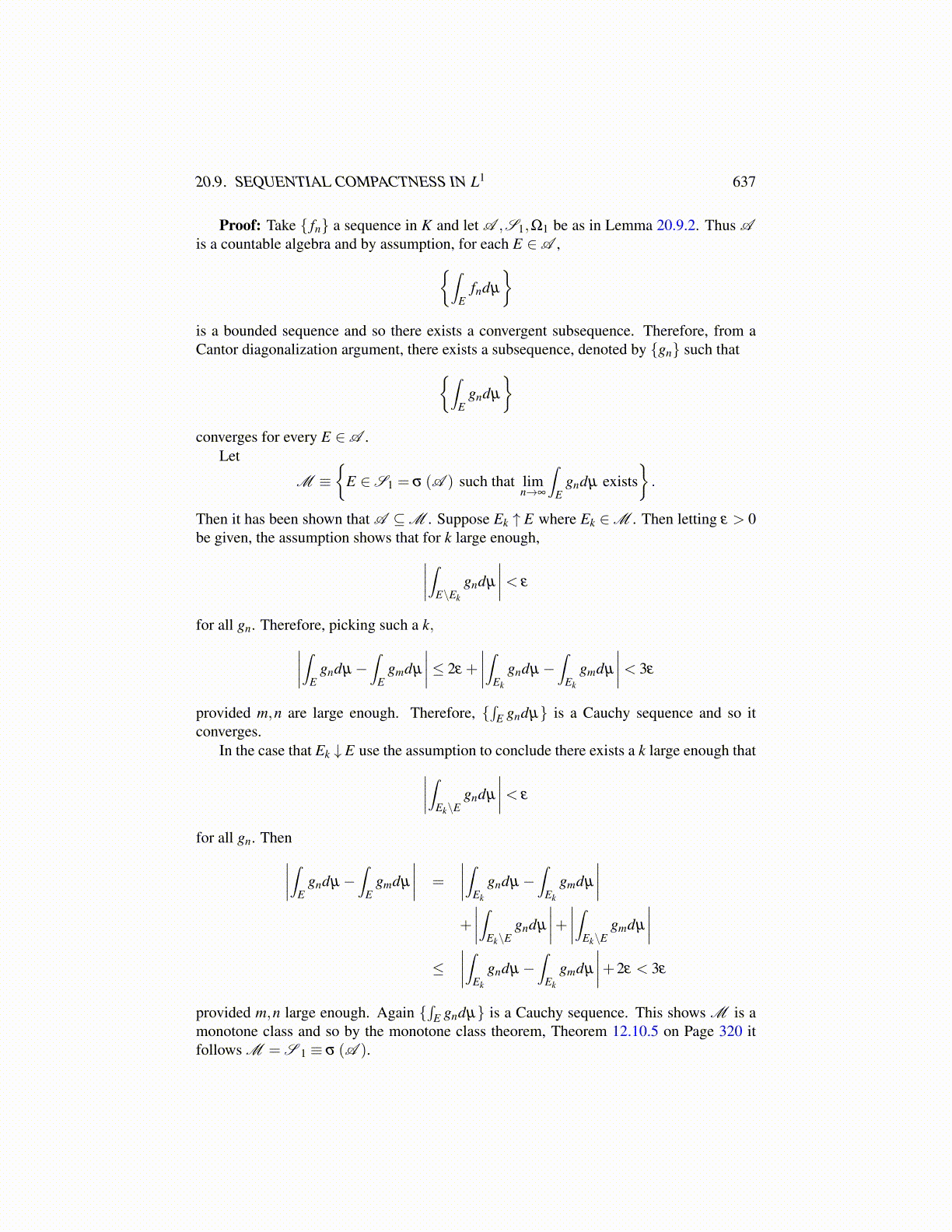
20.9. SEQUENTIAL COMPACTNESS IN L1 637
Proof: Take { fn} a sequence in K and let A ,S1,Ω1 be as in Lemma 20.9.2. Thus Ais a countable algebra and by assumption, for each E ∈A ,{∫
Efndµ
}is a bounded sequence and so there exists a convergent subsequence. Therefore, from aCantor diagonalization argument, there exists a subsequence, denoted by {gn} such that{∫
Egndµ
}converges for every E ∈A .
Let
M ≡{
E ∈S1 = σ (A ) such that limn→∞
∫E
gndµ exists}.
Then it has been shown that A ⊆M . Suppose Ek ↑ E where Ek ∈M . Then letting ε > 0be given, the assumption shows that for k large enough,∣∣∣∣∫E\Ek
gndµ
∣∣∣∣< ε
for all gn. Therefore, picking such a k,∣∣∣∣∫Egndµ−
∫E
gmdµ
∣∣∣∣≤ 2ε +
∣∣∣∣∫Ek
gndµ−∫
Ek
gmdµ
∣∣∣∣< 3ε
provided m,n are large enough. Therefore, {∫
E gndµ} is a Cauchy sequence and so itconverges.
In the case that Ek ↓ E use the assumption to conclude there exists a k large enough that∣∣∣∣∫Ek\Egndµ
∣∣∣∣< ε
for all gn. Then∣∣∣∣∫Egndµ−
∫E
gmdµ
∣∣∣∣ =
∣∣∣∣∫Ek
gndµ−∫
Ek
gmdµ
∣∣∣∣+
∣∣∣∣∫Ek\Egndµ
∣∣∣∣+ ∣∣∣∣∫Ek\Egmdµ
∣∣∣∣≤
∣∣∣∣∫Ek
gndµ−∫
Ek
gmdµ
∣∣∣∣+2ε < 3ε
provided m,n large enough. Again {∫
E gndµ} is a Cauchy sequence. This shows M is amonotone class and so by the monotone class theorem, Theorem 12.10.5 on Page 320 itfollows M = S 1 ≡ σ (A ).